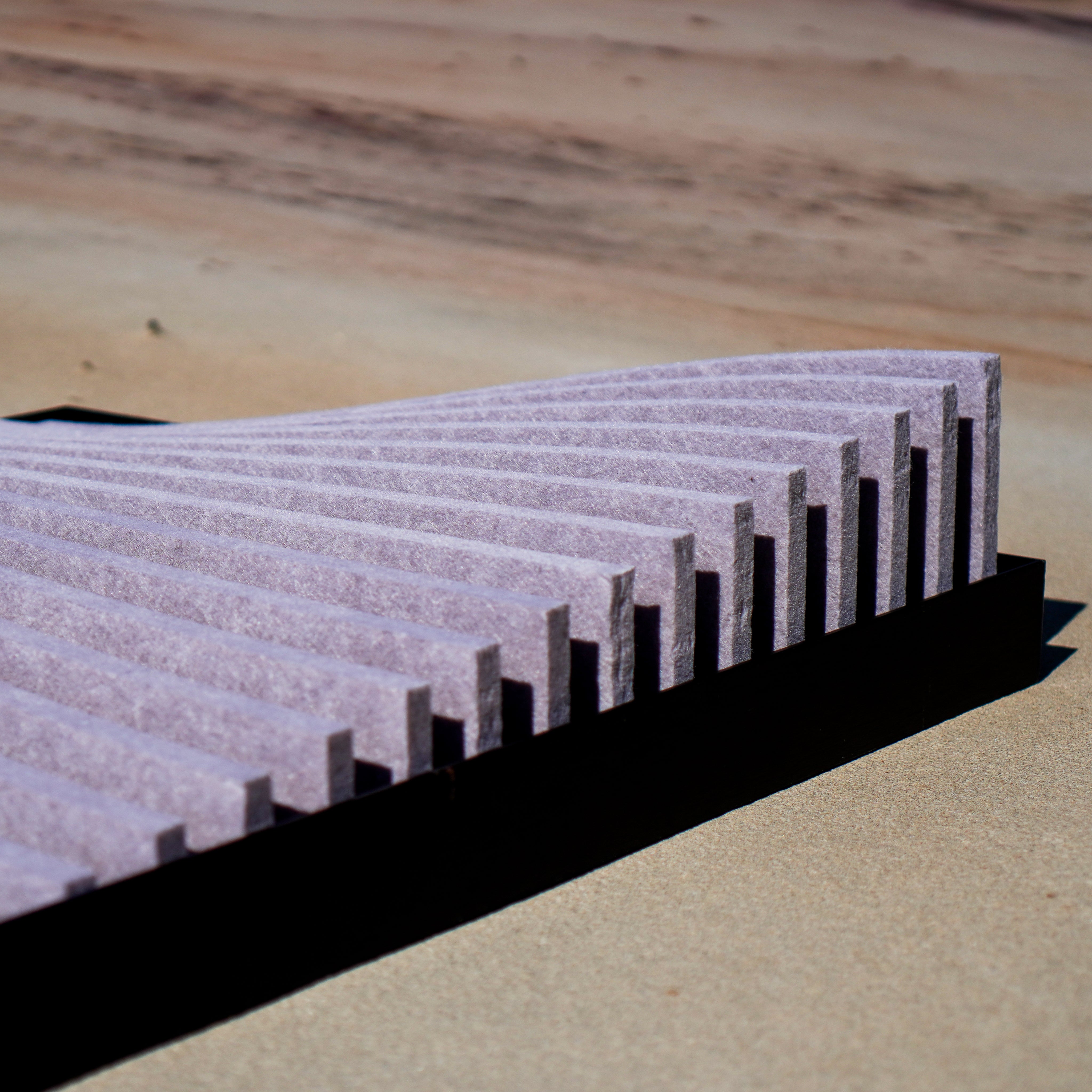Not all performance shows up on paper. Some panels just feel right — the room sounds tighter, the low end clears up, and you can hear details you didn’t realize you were missing. But when you check the lab specs? The difference looks subtle, even underwhelming.
So what’s happening?
ASTM tests often use a fixed area, isolated, in a controlled reverberation chamber.
But that’s not your room.
In real life:
- Rooms vary wildly in size, shape, and reflective surfaces
- Sound builds up over time and space
- And most importantly: you’re listening, not measuring
A single bass trap might not shift the NRC needle — but a stack of two? Suddenly the low end tightens and the mix breathes.
Diffusion Changes the Game
Here’s the secret sauce most specs don’t capture: diffusion.
When you add sculpted or irregular surfaces to your acoustic treatment:
- Reflections scatter instead of bouncing straight back
- Waves hit absorptive surfaces at better angles or multiple times
- It reduces comb filtering and high-frequency fatigue
Even if the NRC curve looks unchanged, the room feels clearer. Less “slap,” less smear, more definition.
Diffusion doesn’t just sound better — it makes absorption work better too.
That’s why our modular system isn’t just about stacking thickness. The surface geometry, spacing, and flow all play together.
image below, diffusive surfaces of rhythm series.

Different sounds live in different parts of the frequency spectrum.
That means your experience depends on whether a panel is absorbing the right parts of your sound.
For example:
- A podcaster’s voice lives between 100Hz–3kHz. If a panel dips hard at 800Hz, it can make speech sound boxy or unclear.
- A trumpet throws out tons of energy around 1kHz–6kHz. A panel that only absorbs lows won’t touch it.
- A bass guitar hovers in the 40Hz–500Hz zone. Many decorative panels barely reach there — but you’ll still feel the muddiness.
-
The best panel isn’t always the one with the highest NRC — it’s the one tuned to your sound.
Think of your room like a tailored suit:
- Vocal-forward setups (voice-over, podcasting) need control in the mids and a touch of warmth — no harsh echoes, no boxiness.
- Bass-heavy productions (trap, dub, film scores) crave thickness and damping in the lows, or the room fights back.
- Instrumentalists (horns, strings, jazz keys) benefit from a bit of liveliness — too much absorption flattens the soul.
You don’t need a ‘perfect’ curve — you need the right curve for your sound.
If your work lives in a specific frequency band, matching your panels to that zone creates instant clarity, warmth, and balance. That’s why we test, tweak, and tune with artists in mind — not just lab curves.
Our Ears Love Decay, Not Just Coefficients
NRC values show how much energy is absorbed, but not how fast the room returns to silence.
And in music? The decay is the vibe.
So if your panels feel like they “clean the room,” even if the numbers are modest — trust your ears. They’re tuned to what matters.
Curious?
Hust wander through our panels — no pressure. You’ll know when one feels right.














Share:
Beyond the Specs: What Is an Air Gap — and Why Does It Help?
Beyond the Spec: What’s Your Sound Made Of?